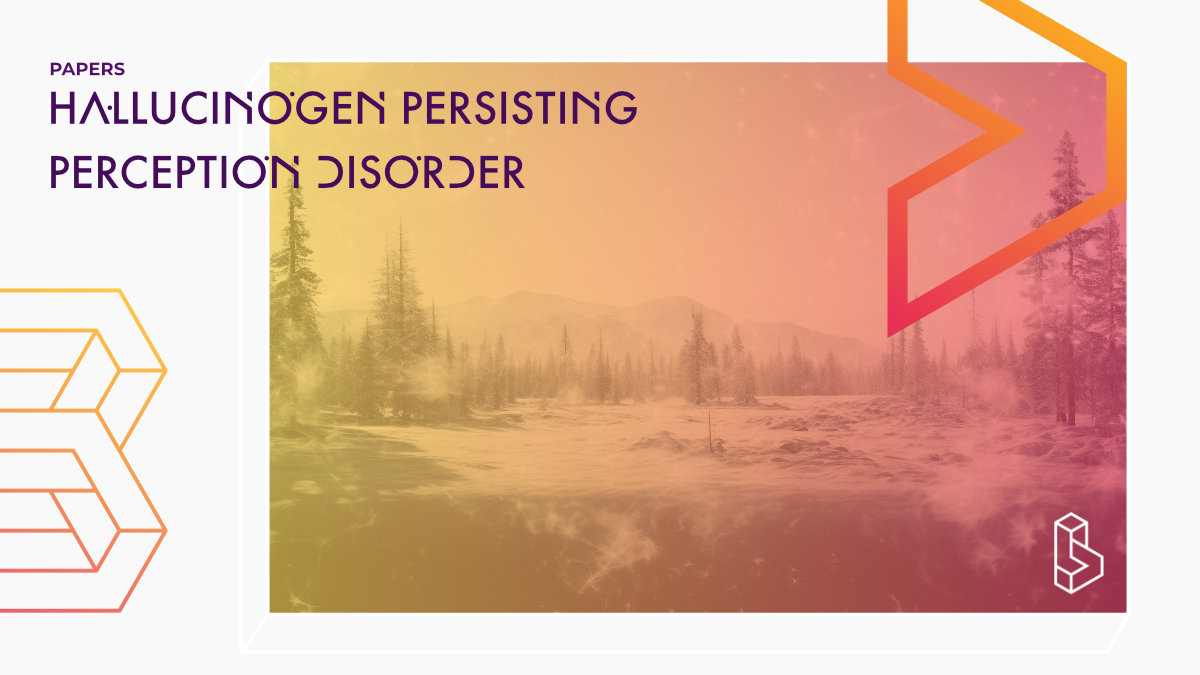This meta-analysis (2003, s=20) reviews the findings concerning the Hallucinogen Persisting Perception Disorder (HPPD, or flashbacks) diagnosis. It discusses the difficulty of applying its diagnostic criteria reliably in light of the ambiguous definition of a ‘flashback’ which shares similarities with symptoms of PTSD. Results conclude that the prevalence of strict HPPD in response to illicit hallucinogen use is probably very low, although the aetiology and treatment of this disorder are understudied.
Abstract of Hallucinogen persisting perception disorder
“Introduction: Flashbacks’ following use of hallucinogenic drugs have been reported for decades; they are recognized in DSM-IV as ‘Hallucinogen Persisting Perception Disorder (Flashbacks)’, or HPPD.
Methods: We located and analyzed 20 quantitative studies between 1955 and 2001 examining this phenomenon. However, many of these studies were performed before operational criteria for HPPD were published in DSM-III-R, so they are difficult to interpret in the light of current diagnostic criteria.
Results: Overall, current knowledge of HPPD remains very limited. In particular (1) the term ‘flashbacks’ is defined in so many ways that it is essentially valueless; (2) most studies provide too little information to judge how many cases could meet DSM-IV criteria for HPPD; and consequently (3) information about risk factors for HPPD, possible etiologic mechanisms, and potential treatment modalities must be interpreted with great caution. At present, HPPD appears to be a genuine but uncommon disorder, sometimes persisting for months or years after hallucinogen use and causing substantial morbidity. It is reported most commonly after illicit LSD use, but less commonly with LSD administered in research or treatment settings, or with use of other types of hallucinogens. There are case reports, but no randomized controlled trials, of successful treatment with neuroleptics, anticonvulsants, benzodiazepines, and clonidine.
Discussion: Although it may be difficult to collect large samples of HPPD cases, further studies are critically needed to augment the meager data presently available regarding the prevalence, etiology, and treatment of HPPD.”
Authors: John H. Halpern & Harrison G. Pope
Summary of Hallucinogen persisting perception disorder
Reports of ‘flashbacks’ following the use of hallucinogenic drugs date back for decades, but it was not until 1986 that standardized op- erational diagnostic criteria for ‘flashbacks’ were offered.
Following cessation of use of a hallucinogen, a person may experience one or more of the perceptual symptoms experienced while intoxicated.
The symptoms of schizophrenia must cause clinically significant distress or impairment in social, occupational, or other important areas of functioning.
Find this paper
Hallucinogen persisting perception disorder: what do we know after 50 years?
https://doi.org/10.1016/S0376-8716(02)00306-X
Open Access | Google Scholar | Backup | 🕊
Cite this paper (APA)
Halpern, J. H., & Pope Jr, H. G. (2003). Hallucinogen persisting perception disorder: what do we know after 50 years?. Drug and alcohol dependence, 69(2), 109-119.

